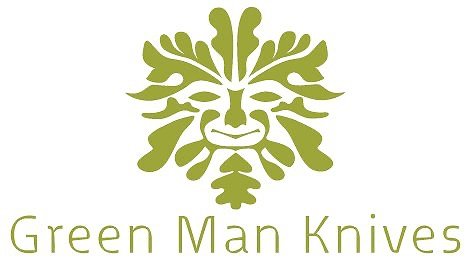All my blades are made from steel, either one piece of steel or laminates of different steels. Laminating steels is done to achieve certain desirable properties in the blade or just to make a blade more visually appealing.
I have listed below the steels that I like to use the most and some others that I have used.
High-Carbon Steel
This family of steels has at least 0.8% carbon in its alloy. They have little or no resistance to staining and will rust, some more readily than others, if they are not cared for properly. After a time they will become 'stained' by the things they are used to cut. This in no way affects their performance and many people find the mottled grey patina they achieve to be very attractive.
They do, however have very desirable properties. They hold a very good cutting edge and are relatively easy to sharpen.
O1 Tool Steel
This steel is widely used by knife-makers and preferred by a wide range of users. It will rust and stain readily if not cared for but is very easy to sharpen and takes a great edge. I will only use this now by special request.
L3
I have started using this steel in my outdoor knives as it doesn't stain as readily as O1 and it will hold its edge longer. There is always a trade-off, though; L3 will take just a little longer than O1 to sharpen.
26C3
I now use this steel in all my high-carbon domestic knives. At a very high 1.2% carbon content, it is similar in performance to the Japanese ‘white paper steel’, although other additions to 26C3 give it better and harder-wearing edge.
Stainless Steel
Stainless steel is still a relatively young product, having been invented just over 100 years ago.
Because of this the development of alloys in this category is very fast and the old saying that 'a stainless blade won't take an edge' is all wrong.
The latest steels in this field employ a manufacturing technique called 'Powder Steel Metallurgy' that produces some amazing blade steels.
They have a very fine grain structure, meaning a sharper edge, and they are very wear-resistant and hold this edge for longer.
This resistance to wear means that, although they show very good performance, they are a little harder to sharpen. When you try to hone a dull blade back to brightness it will take a little longer. They also tend to be more expensive than high-carbon steels.
That said, these blades are very popular and will always, with care, remain bright and shiny.
RWL34™
I use this steel most regularly when stainless steel is called for. It is a non-patterned steel made by Sodafors of Sweden.
DS93X™
A pattern-welded steel, also known as Damascus steel. It is created by combining two different knife steel grades to produce a beautiful pattern similar to a water mark.
Laminated Steels
To make any blade we wish for two favourable properties.
Sharpness
Toughness
There are other properties but these are the most important and they are always in tension with each other: increase one, you decrease the other.
For a blade made from one kind of steel sharpness and toughness are always a compromise.
With a laminated blade, one steel whose purpose is sharpness and hardness, can have layers of softer steel joined on either side to stop it from shattering like glass. This is called San Mai steel.
It is believed that a blade can be improved further by more laminations on either side of the core blade steel. Whilst this may be true for a very long blade such as a sword, which has to withstand wildly varying forces along its length, it is unlikely to yield any improvement on even a long sashimi knife over a San Mai blade, other than aesthetics - a multi-layered knife does look rather pretty.
White Paper San Mai
This is a laminate having a core of Hitachi white paper steel and 'cheeks' of lower carbon steel.



